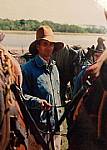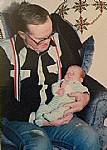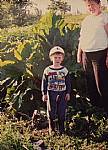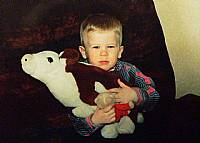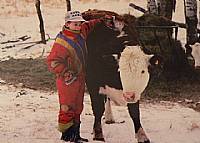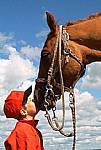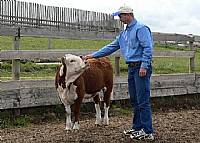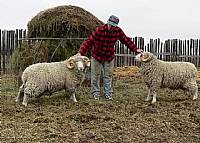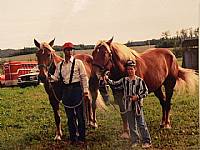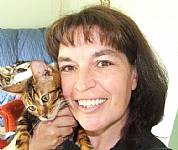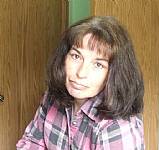
|
|
About Us
Time never stands still and change is inevitable. How we confront the challenges and the change, is our choice. To this extent, major changes have led to the new edition of Coyote Acres. Coyote Acres is now the joint venture of Lorri and Patric Lyster. The coyote didn't swallow up Sheep Trax, rather the two operations are merging into one, under the umbrella name of Coyote Acres, expect to find Sheep Trax and Coyote Acres. Therefore, it is time to welcome you to the new edition of COYOTE ACRES. The new edition is here. Some things have changed but our commitment to raising quality livestock that can perform under less than ideal conditions, is as strong as ever. We look forward to continuing to serve present customers and to meet new customers and friends. We also have a strong belief in heritage breeds and will endeavour to preserve their genetics and to help reintroduce them to the agricultural community. One never knows what may come from chance and adversity. By chance, we met through our love of Shropshire sheep. We both had to deal with the unfortunate occurrence of Scrapie in a ewe purchased by Coyote Acres. It has shown us how circumstance can change things in a second, while also showing us that with the support of friends, we can make it through anything. Together, we are ready to write the next chapter in the Coyote Acres story. HISTORY of COYOTE ACRES prior to the new edition: A little history of how Coyote Acres came to be. My parents Ivor and Elaine Lyster, were ranching at Millarville, Alberta when I was born. There I started growing up, with much time spent around livestock and horses in particular. In 1973, the family moved to a "farm" at Vilna, Alberta. Here I finished my schooling while being involved in 4-H. Mom was heavily involved in 4-H at all levels and dad was also a 4-H leader. The 4-H motto, "learn to do by doing" was instilled into our lives. Following this motto, coupled with lots of encouragement and help from family and friends, I began the journey into agriculture. Participation in beef, sheep and horse clubs helped fuel an interest in livestock. At the age of about 6 months I got my first horse, given to me by Denver, my brother who was 4 at the time. A companion for 31 years, Stormy instilled a deep love of horses. Always being around animals led to having cattle. At the age of 10, much to Dad's dismay ( I think more for show than actual) I obtained a small flock of sheep. This has led to many wonderful experiences and really started me into the purebred genetics business. After completing high school, I traveled to Australia with the International Agriculture Exchange program. A great experience and opportunity. After returning to Canada, I worked on dairies at Vilna and also worked at the St. Paul Auction Market. I also at this time took short agricultural courses including artificial insemination. Years prior I had taken a sheep shearing course as well. I then attended Olds College, obtaining my Farrier Science certificate, which led to a few years of trimming and shoeing horses. A career choice cut short by an unrelated back injury, which also slowed down the sheep shearing. At this time, I spent 2 summers working on the Hays sheep pasture near Vauxhall, Alberta. Through these years I had established a purebred Suffolk sheep flock and had also added polled Dorsets. Meanwhile Dad had built a herd of Polled Herefords within his commercial cow herd. It is from his herd that our current Polled Hereford herd began. The name Coyote Acres was used on cattle at this time, having previously been used on sheep only. Initially the result of a joke by Grant Gilland, an Alberta Agriculture Specialist. The name came into being at a low point in the price cycle in sheep. At that time, the government had a predator indemnity program , which compensated farmers for losses due to coyote kills. The program paid for confirmed losses at an 80% rate, basing lambs at current market value and ewes at $100. There also was a program where you could get assistance to put up "predator control" fencing. To access this program, you needed to submit an application and proposal to your local Ag Specialist. Having noted there was no distinction between cull ewes in the indemnity program and sheep being cheap at the time, I made a proposal based on the fact that at the time coyote pelts were quite valuable. The short of it is, I planned to put up predator control fencing and place 5 pairs of coyotes inside. With good feeding, it was hoped that perhaps 20 pelts per year could be harvested. But best of all cull ewes were selling for around $5 each. Now if I put them in with the coyotes, I would be eligible for the Predator Indemnity payout of $80 each. With a bit of cost involved, I felt that it would return about $70 per ewe profit, which was almost unattainable under the current market conditions. This coupled with the income from pelts meant that a pasture full of coyotes would be much more profitable than one full of sheep. For some reason Grant wouldn't approve the plan and just said you and your "Coyote Acres". Then when Denver said it was either Coyote Acres or sheep tick flats, the choice was obvious. A name was born that has stuck. 1985,the next few years I worked for Bill Finch, working with an excellent herd of mostly Jersey cows with a few Holsteins thrown in to "water down the milk". Here I was given the opportunity to become quite proficient in artificial insemination. Bill also allowed me to maintain my flocks of Dorsets and Suffolks. At this time, through the dairy and through raising rams that were performance tested, many at the Test Station ran at Olds College, I learned how detrimental one trait selection could be. The drive for milk production in the dairy industry had led to some atrocious udder and teat problems, feet and leg problems and a definite loss of longevity. The high growth selection in sheep had led to a major loss in maternal capabilities as well as a loss in longevity. It was time to reevaluate things and set new goals and priorities in my breeding programs. I had proven that I could produce terminal sires that could grow with the best of them, but at what cost? It was then that I really started looking at the input costs and equating my purebred flock back to a commercial one. Yes a ewe producing a single ram lamb that sells for $500 or more can be profitable in a purebred flock, but if her lamb had to be marketed as a slaughter lamb, she suddenly became unprofitable. If I continued to produce this kind of product, was I really helping my commercial buyers? The answer is not simply yes or no. If they were only using the genetics for terminal production, then yes, but if they were keeping replacements, then the answer was no. Thus began the change to a more commercial oriented program. The Horned Dorset flock was started and eventually took over the spot of the Polled Dorsets which got phased out. In 1991, I returned to Vilna, Alberta and the family "farm" which had basically been converted to a ranch (no longer dirt farming but rather grass farming, and marketing the grass through livestock). In November, my son Rockford (better known as Rocky) was born. Another generation had arrived bringing many joys and a few trials. He seems to be a lot like his father. As a former teacher, Frank Barry, said, (referring to the dad at school) "he was an angel, but often the halo got pretty tight". This time also brought about the start of our purebred cattle business. Starting with a small herd of Commercial cattle and a few registered Polled Herefords, we were on our way. At this time I was also working off farm, making sausage as well as working at the Alberta Forest Nursery near Smoky Lake, Alberta. I also started looking after a share herd of cattle. While managing this herd, the owner added a group of Black Angus females to it. Their performance compared to the exotic cross herd was excellent and this led to my decision to add purebred Angus to my operation. In 1994 I purchased a group of Angus heifer calves from Darrel & Wendy Ashbacher of Millarville (at the time, now ranching at Halkirk, Alberta). The Angus herd was under way. At this time, I also dispersed the Suffolk flock in my quest to raise livestock that could do well under low management on a mainly forage based diet. In 2005, a major change came. My parents decided they would retire from semi retirement and thus put their property on the market. Due to my ex-wife having some health issues, I decided to scale back our operation at this time as well. Having adjoining properties we decided to offer everything as a package. In short order I was looking for a new home. After being unable to complete deals on some properties and under time constraints I lucked upon a property suggested by Glen Gilmar of Rollyview Polled Herefords. By chance it was also on a suggested list from our realtor, Barbara Byers of CIR realtors in Calgary. It was an old hog set up with a good house. 3 big barns gave it a lot of potential and we made an offer, which was accepted. I moved to my new home in September of 2005. The addition of Canadienne dairy cows was the result of having used a jersey cow for many years to provide milk to feed orphan lambs. The Jerseys did not do very well in winter without being in a barn. My dislike of forking manure led to a search for something better. The search led to a made in Canada breed called Canadienne or Canadian. Sometimes referred to as black Jerseys, the Canadian cow is noted for being hardier. In 2003 I purchased some from Ontario and Quebec. They have not disappointed me with their wintering ability. Shropshire sheep were added to the program. In short they are a breed that is noted for doing very well on forage, is maternally strong, and is able to produce a good carcass. The purchase of breeding stock from Ontario, mostly from or of breeding from the flock of Muriel Burnett. Additions were made from the Mayflower flock of Allison Cole, in Nova Scotia and a few from Montana Jones, Ontario. The program was started, with a full realization that the genetic pool was quite limited for this now rare breed. The Large Black pigs were established in 2003, when I became involved initially in transporting a group of them from Ontario to Alberta. Having raised my own pork for years, I was familiar with pigs or was I? Never had I seen pigs with such a lovely disposition. I was hooked and purchased a small breeding group for myself. The chicken flocks were started in 2005. Normally I never kept chickens over winter, rather buying in the spring and butchering in the fall. With my new location at Fawcett, I had the place to winter some. I decided we wanted to raise some dual purpose chickens to produce my own eggs and also produce eating chickens. Buff Orpingtons and Barred Rocks were my early choices. Not having a heated area, frosted combs became an issue, so the search was on for something better. Well, wouldn't you know it, the French Canadians had developed another well adapted Canadian breed, the Chantecler. I purchased some from Ontario and Quebec and was underway.
History of Sheep Trax:
After having raised Canadian Arcotts commercially for several years, I found my thoughts turning to another breed. I knew I would like to try another breed alongside the Arcotts, but in smaller numbers, just as a sideline. I realized that what I was really interested in was doing something to help preserve a rare breed. I remembered years back I had asked my father, who had stopped raising sheep before I was born, what kind of sheep he used to raise. His answer was “Shropshire,” and my memory of that was what started me on this journey.
Through inquiries about Shropshires I met Patric, a friend who became my closest friend when we each found our respective lives taking some unexpected twists and turns.
My Shropshire venture has been slow to get off the ground, but I have stuck with it; this perseverance has become vital since losing precious Shropshire numbers in the last two years. I can think of no one better to work with than Patric at bringing this breed back.
The Shropshires work well with the Canadian Arcotts; they share a lot of traits and they co-exist well together, both breeds being equally aggressive at the feed bunk, while still not having excessive feed requirements.
-Lorri Recent times: In 2011, another major change occured. I needed to make some hard decisions and decide what to pursue in the future. I decided to scale back somewhat and look for off farm employment. Well the off farm employment ended up involving a move and relocating the operation to my place of employment, near Halkirk. During all of the decision making and moving, I had the support of an amazing lady, Lorri Nelson, who is now my partner as I or we move into the future. In conjunction with our operation, I have been involved as a director of an Agricultural Society, President of Minor Sports Team, Alberta Sheep Breeders' past director, past director of the Alberta Angus Association and many other livestock and agricultural groups. I have been a 4-H assistant leader as well as working on the junior sheep committee for Edmonton Northlands and chairing the multi species judging for Farmfair. Rocky was active in school sports, 4-H and the Junior Hereford Association. Our livestock are registered in the Canadian Angus Association, Canadian Hereford Association, Canadian Sheep Breeders Association through the Canadian Livestock Records, the Canadian Cattle Breeders Society also through the Canadian Livestock Records. Many of these breed associations and/or registries have pedigree search capabilities where you may check out our bloodlines. Ownership is listed under Coyote Acres, Patric Lyster or Lorri Lyster. THE FUTURE: As with all things, change is inevitable. We don't know what the future holds, but we intend to do our best to continue to produce genetics that will be profitable to those who choose to use them. As much as we love our livestock, it is really the people that we meet and the places we get to see that are our greatest rewards. In closing this section about us, I would like to add some words of wisdom.
Common sense is really not all that common. Thanks for your time, |



